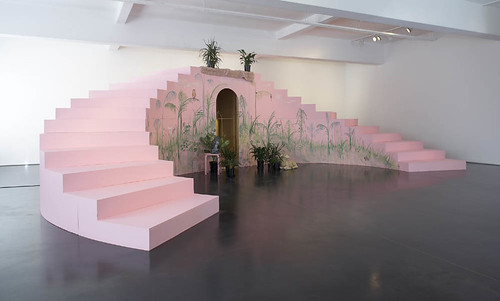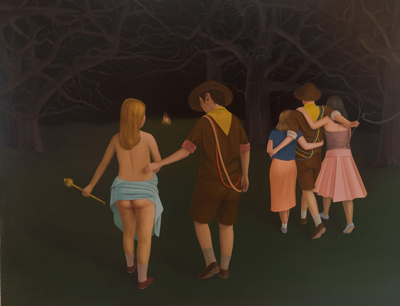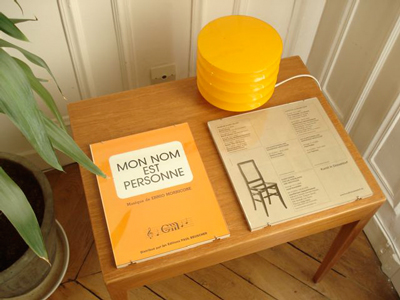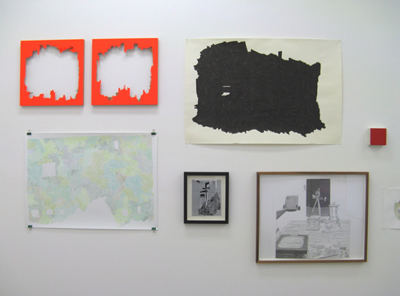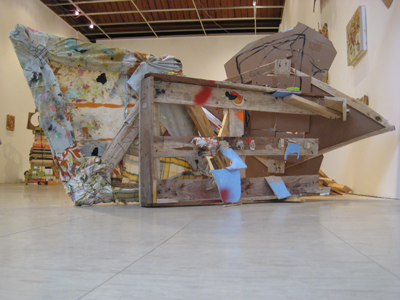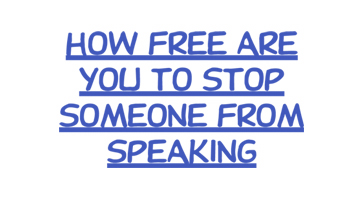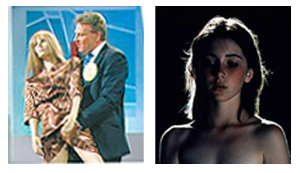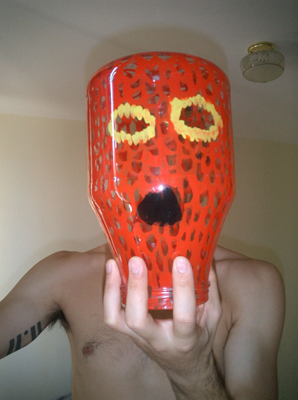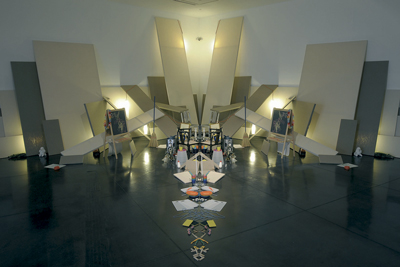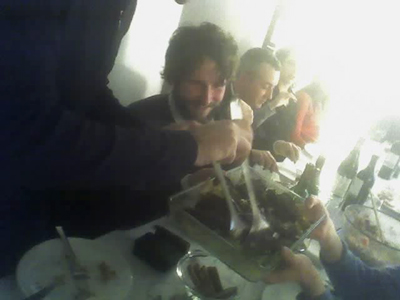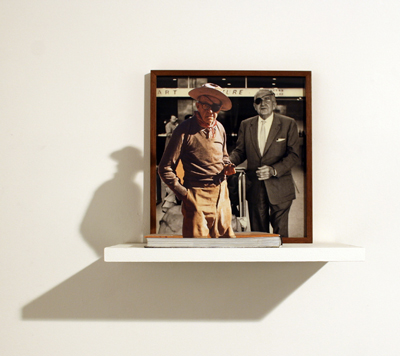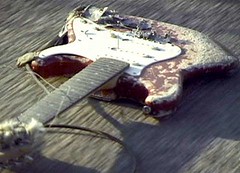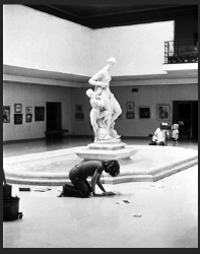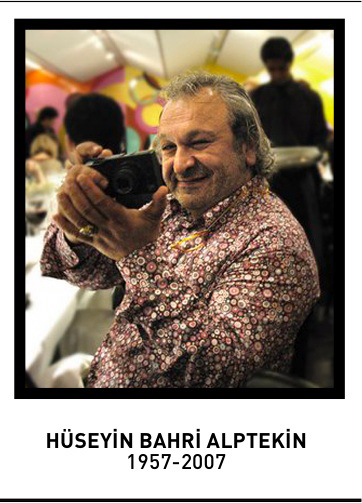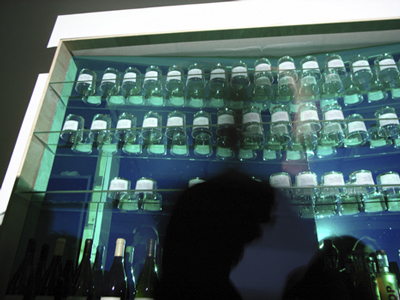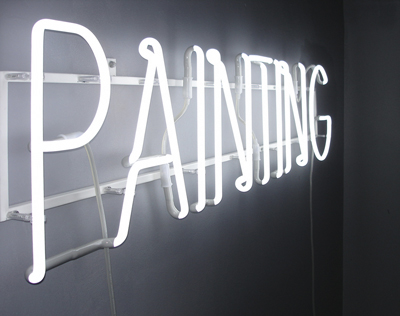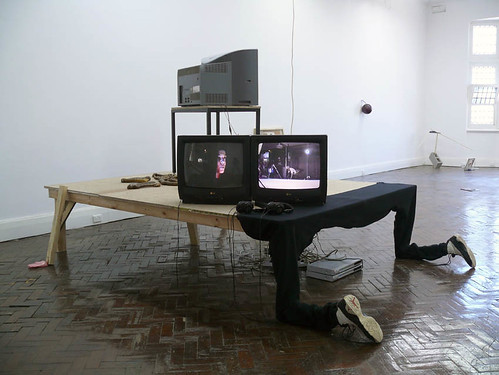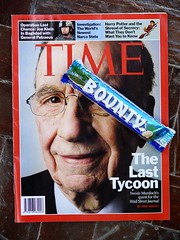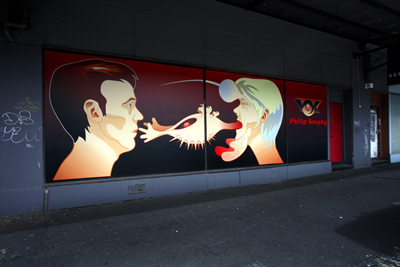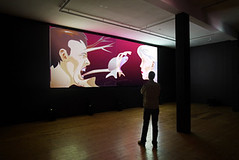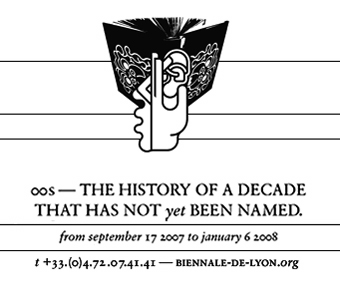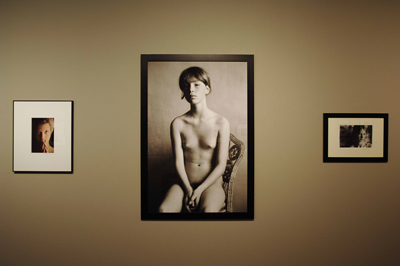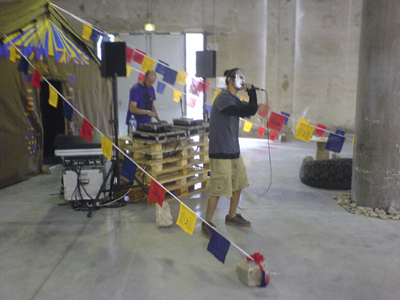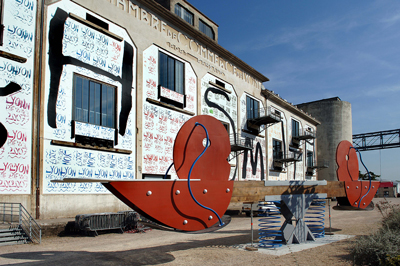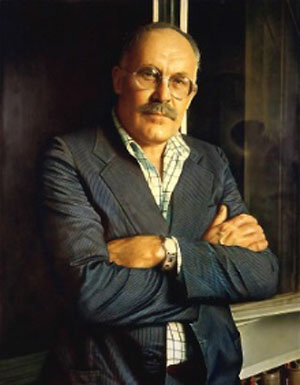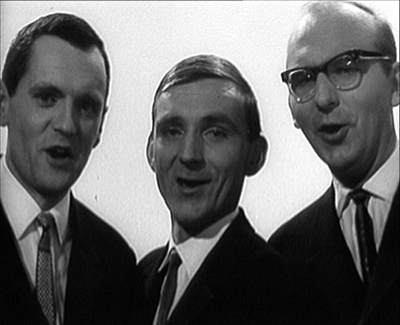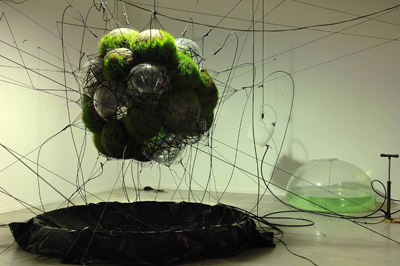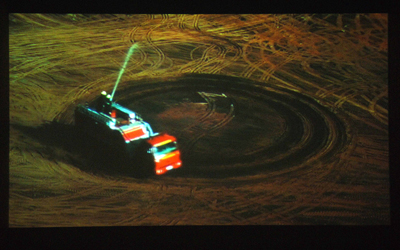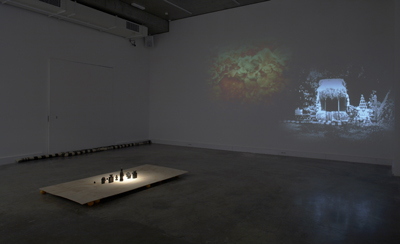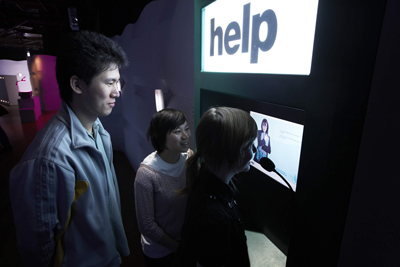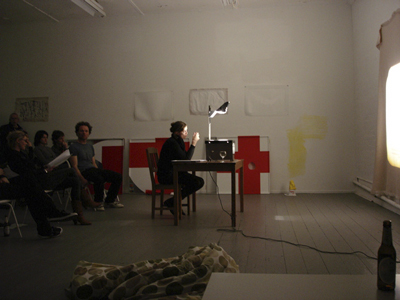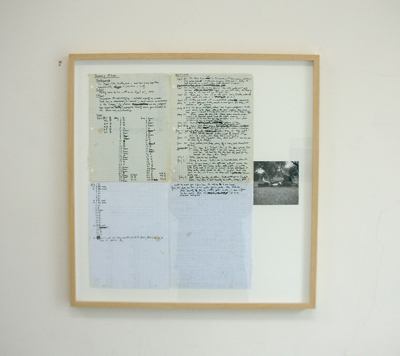RMIT Project Space Spare Room, Melbourne Aug–Sept
Justin Andrews (Curator), Stephen Bram, Bianca Hester, Kyle Jenkins, George Johnson, John Nixon, Kerrie Polliness, Sandra Selig, Masato Takasaka, Inverted Topology (Danny Lacy, Gemma Smith and Mimi Tong) 
Justin Andrews has curated a highly considered and elegant exhibition for RMIT Project Space and Spare Room. Titled Abstraction/ Architecture/Space, he has eloquently selected twelve artists of diverse experience and development whose practices deal with the convergence of these themes. Andrews follows a somewhat traditional curatorial model but maintains a natural flow and easy relationship between works. But it’s Carolyn Barnes’ accompanying catalogue text that generates a critical perspective on the history of these artists’ practices and fully investigates the curatorial premise.
Three works in this exhibition provide the most exciting points of conflation between ideas in and around abstraction, architecture and space. George Johnson’s Sonata No.1, 6.2.2005 uses acrylic on canvas to convey dynamism of form and colour in an arrhythmic abstraction. Sandra Selig’s volumetric sci-fi installation Time isn’t holding us explodes a geometric web of white elastic from rock and Stephen Bram’s Untitled (Two Point Perspective) pigment print on paper obsessively overlays black lines to provide an intensely warped moment of amplified architectural drawing.
Discussing each artist in detail, Barnes cites various influences and antecedents to these works from Bauhaus to Minimalism-Conceptualism and examines the traditions and contemporary relevance of Modernism within an international and Australian art context. Abstraction/Architecture/Space is an exciting exploration of new developments in non-objective art and contemporary modes of abstraction.
Meredith Turnbull*****
RMIT’s glass-fronted Project Space is more retail showroom than abstracted white cube. A sense of overwhelming transparency dominates, one is caught in the glare of the high beam – nowhere to run, nowhere to hide. It’s the type of paralysis we see in retail display.
The current exhibition Abstraction, Architecture, Space, curated by Justin Andrews, creates a light, yet self-assured footprint in this display cabinet. Drawing on the over-exposed conditions as a metaphoric and material opportunity, the show flows easily between specific responses to the gallery environs and a more generalised hermeticism, typical of historical abstraction.
For example, Stephen Bram’s work Untitled (Two Point Perspective) is wryly hung directly opposite the front glass wall. Rather than a face-off between the contained art object and the random, moving images of the street, this small, framed work acts as a projector of the prevailing conditions, without getting specific about it. Bram’s outreaching refractions break through the frame, creating a sense of continuum with the present, encapsulating the responsive sense the show has as a whole.
Rather than a testament to the survival-machine status of Modernist abstraction, the works, and the way they come together, are as resolutely about now as any more fashionable takes on relativism. The familiar sense of high-mindedness typical to the idiom is not apologetically undermined, rather, the continuing dilemma of being in the world – of conjecture, potentiality and process – reigns over any sense of aloofness or estrangement. Revisionism is not on the agenda.
Adrien Allen*****
(see details for this exhibition on the post below)It's great when artists can pull off a curated show with a fancy essay, nice catalogue and impressive mix of works. As an artist you can maintain the autonomy of a practice and closeness to your peers, while I guess as a curator type you're always torn between choosing specific works to feed the 'vision' of the show and teasing out new works by artists to extend their practices and take a few risks. Both can be said of this show by Justin Andrews, who has succeeded in defining links between abstraction and architecture by inviting a handful of this country’s foremost spatial/abstract practitioners to live the dream. Each work has been carefully selected to occupy a specific space within the gallery and each space within the gallery has been occupied nicely. I forgot about the premise and just enjoyed seeing a bunch of great works working together.
Geoff Newton
